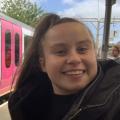
SCHOOL children were given the unique opportunity to speak directly to an astronaut as they connected to the International Space Station.
Youngsters at Robert Drake Primary School, in Thundersley, were given the chance to quiz astronaut Sunita Williams 250 miles above Earth on the space station.
The special event allowed students to ask their space-related questions to Sunita as she orbited Earth quizzing her on her life in space, training to become an astronaut and the do's and do nots of living on the space station.
Penny Coe and Natalie Jackson, co-headteachers at The Robert Drake Primary School, said it was a once in a lifetime experience for the pupils.
They said: “The International Space Station online session with our school was a real privilege as only four schools in the country have been chosen this year to participate in this incredible opportunity.
“The pupils were so excited to come together and listen to Sunita answering their questions – the energy in the school was electric.
“This was the launch of our Space Week where the pupils are participating in a variety of scientific activities including rocket making, learning about famous astronauts and NASA. “After the call with the International Space Station, we now have pupils who are aspiring to be our next generation of space explorers.
“We are very proud of all of our pupils at Robert Drake, for their positive attitudes and enthusiasm, in the build-up to this once in a lifetime experience.
“So many happy memories were made that will last a lifetime.”
The students at Robert Drake had their questions answered live, including topics such as life in space, training to become an astronaut, and whether you can watch TV.
Other questions included whether Sunita had seen any shooting stars, how she gets food and drink, what she eats, and what fun she can have in space.
Hanna Simpkin, science leader at the Robert Drake Primary School, added: “It was great to have Sunita Williams answering our questions and inspiring girls and engaging all pupils in STEM subjects.
“It showed how their dreams can become a reality.”
The program, which arranges 60-100 of these amateur radio contacts annually, brings space closer to students around the world by facilitating direct communication with astronauts aboard the International Space Station.



Comments: Our rules
We want our comments to be a lively and valuable part of our community - a place where readers can debate and engage with the most important local issues. The ability to comment on our stories is a privilege, not a right, however, and that privilege may be withdrawn if it is abused or misused.
Please report any comments that break our rules.
Read the rules hereLast Updated:
Report this comment Cancel